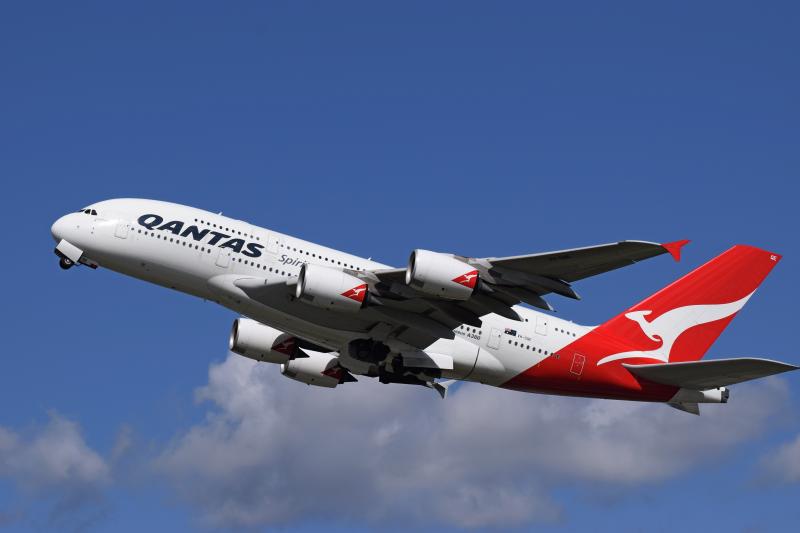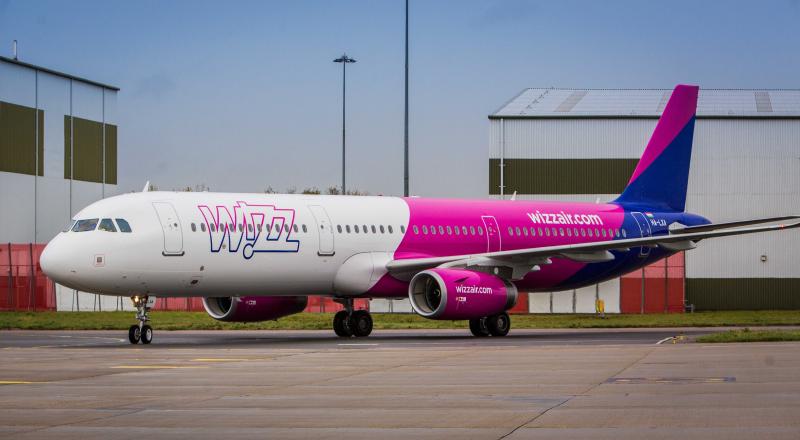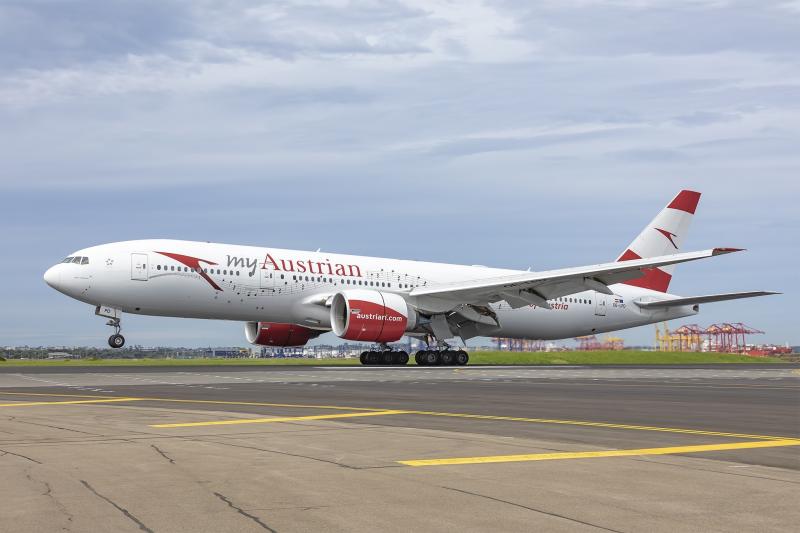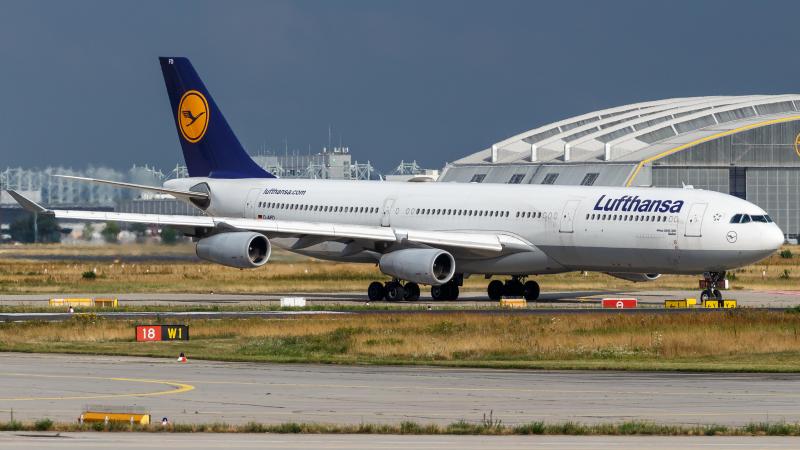Thomas Haynes explores some of the more unique flights that have occurred during the pandemic.

1. Qantas Swaps Singapore Stopover for Darwin
Qantas’ flagship Airbus A380 route linking Sydney/Kingsford Smith with London/Heathrow was made a little trickier when Singapore unexpectedly closed its borders to transiting passengers on March 23. The Australian flag carrier has now switched its stopover to Darwin.
Flight QF1, the rotation from Sydney to London now stops in the Northern Territory capital before continuing for almost 17 hours direct to Heathrow. The return journey is a little shorter, with QF2 covering the distance from London to Darwin in 16 hours 10mins.
A direct routing from Sydney to London would take the aircraft over the city so the choice of Darwin makes sense as the Airbus A380 now doesn’t have to deviate too far off track for its fuel stop. Unlike its routing via Singapore, Qantas has made the decision not sell tickets for each sector but rather the whole journey as the fuel stop in Darwin has been dubbed a ‘gas and go’ operation.
The unusual link is, however, only expected to last until the end of March when the flag carrier is due to ground all international flights following advice issued by the Australian government.

2. Wizz Air Goes Stateside
Hungarian low-cost carrier Wizz Air has operated two repatriation flights to the US. A pair of Airbus A321neos departed Budapest this morning (March 31) bound for Keflavik, Iceland for a technical stop. The first, HA-LVC (c/n 8816) is planned to continue on to New York and Los Angeles on flight WZZ9011. The second, HA-LVE (c/n 8941) is expected to fly to Toronto, followed by Chicago and Miami on flight WZZ9021.
The COVID-19 pandemic and its impact on air travel has left thousands of people stranded all over the world. Wizz is helping with the repatriation of Americans and Canadians on the outbound journey from Hungary and will take Hungarians back to Budapest on its return.
The Canadian Embassy in Hungary tweeted on March 29, announcing that the low-cost carrier would be operating these flights. It said that the services “may be the last available” for Canadians wishing to return home and urged people to get in touch if they wanted to travel on the charters.
Based in central Europe, Wizz Air is stretching the legs of its A321neos on this journey when compared to the type’s typical flight length with the airline. According the Airbus, the jets have a published range of 4,598 miles (7,400km).
3. An Austrian in Australia
Austrian Airlines undertook the longest flight in the company’s 60-year history flying nonstop from Vienna to Sydney on a repatriation service. The aircraft, OE-LPD (c/n 35960), a Boeing 777-200ER departed the firm’s base on a 17-hour, 9,900-mile (16,000km) journey.
Delivered to the carrier in January 2007, the widebody is configured with 38 business class, 24 premium economy and 244 economy class seats.
Elsewhere, the flag carrier yesterday (March 30) operated two more flights from the Austrian capital to Xiamen, China in a bid to bring back medical supplies from the country. Dubbed ‘Corona Airlift’, the operation saw two Boeing 777s travel to the Chinese city and return yesterday with 14m protective masks. The whole operation, as of March 29 had delivered more than 65m pieces of equipment including gloves, masks and protective suits.
The airline hasn’t yet revealed when, or if it will conclude its special repatriation and supply flights.

4. Lufthansa to Mombasa
In a bid to bring back German tourists, Lufthansa operated a flight from Mombasa, Kenya to Frankfurt yesterday (March 30) using an Airbus A340. The Kenyan city is not a regular destination for the flag carrier, so in order to make sure the flight departed, the station manager from Nairobi drove the seven-hour journey to handle the departure.
The aircraft, D-AIGY (c/n 335) was originally delivered to Lufthansa in May 2000 and has space for 279 passengers in a three-class configuration.
The flight to the Kenyan city comes days after the flag carrier operated a Boeing 747 from Frankfurt to Auckland. The widebody, D-ABVY (c/n 29869) was flown from the airline’s hub via Tokyo to the Kiwi city. The journey took more than 20 hours after the jet spent two hours on the ground in Japan.
The service was part of the German government’s wider efforts to repatriate citizens.

5. Stranded Swiss Brought Back from South America
As part of a plan by the Swiss Federal Department of Foreign Affairs (FDFA), tourists from the country were brought home from South America on three Edelweiss Airbus aircraft.
The first, an A340, HB-JME (c/n 559) landed in Lima, Peru on March 25 and returned the same day with around 300 Swiss nationals onboard. The second of the type, HB-JMF (c/n 561) landed in the city on March 30 with about 30 Peruvians and departed the next day with 300 more Swiss and European nationals.
The third rescue flight was operated by an Edelweiss A330, HB-JHR (c/n 1711) which landed in Bogota, Columbia on March 23 and departed the next day bound for Zurich.
In total, the FDFA said these services should bring home around 630 people from Peru and Columbia who otherwise would have been stranded.
6. Qatar Airways’ Unofficial Brisbane Launch
As part of a plan to help stranded passengers get home, Qatar Airways has flown to Brisbane for the first time. The airline has rostered a Boeing 777-300ER for the daily rotation to the Queensland capital.
Alongside a new service to the city, the Qatari flag carrier is expected to add an extra 48,000 seats to the more established gateways of Sydney, Melbourne and Perth. It plans to operate a double daily service to the Western Australia gateway using an Airbus A380 and 777. Meanwhile, Melbourne is expected to receive a twice-daily rotation, on which, the airline has rostered an Airbus A350 and 777. Sydney will be linked with Doha by a triple daily operation that will, like Melbourne, be operated using an A350 and 777.
Akbar Al Baker, Qatar Airways group chief executive, said: “We know there are many people who want to be with their families and loved ones during this difficult time. We are thankful to the Australian Government, Airports and staff for their support in helping us to add additional flights to get people home, and in particular, to bring flights to Brisbane.”
The first connection to Brisbane landed yesterday (March 30). It was operated using A7-BES (c/n 64089), a Boeing 777-300ER which was delivered to the airline in May 2018.
7. Air Tahiti Nui Breaks Records
The COVID-19 pandemic allowed Air Tahiti Nui to break a number of records when it operated its usual service between Pape’ete in Tahiti and Paris/Charles de Gaulle in France on March 15. Travel restrictions imposed by the US meant the Boeing 787 Dreamliner couldn’t land at its usual stopover in Los Angeles but instead had to fly the 9,764-mile (15,715km) distance nonstop.
Doing this, meant that the airline set a new record for the world’s longest flight, overtaking Singapore Airlines’ Singapore to New York/Newark service which comes in at 9,533 miles (15,343km). Air Tahiti’s flight also set a new record as the longest domestic flight ever to have taken place.
The record-breaking flight was operated by F-OTOA (c/n 62711), a six-month-old widebody configured with 294 seats, which were unlikely to have all been filled. While it may have been able to make the journey nonstop eastbound, it isn’t possible westbound because of the winds aloft. As such, the carrier has selected Vancouver as a stopover for the flights in the coming weeks.

8. Iberia’s A350 Expedition
Spanish flag carrier, Iberia is using two of its Airbus A350s to collect medical supplies from Shanghai. The widebodies, EC-NBE (c/n 271) and EC-MXV (c/n 219) left Madrid bound for Shanghai/Pudong on March 30.
The flights form part of a project, coordinated by Iberia and two Spanish firms, Fenin and Grupo Oesía. The initiative aims to bring back medical supplies and personal protection equipment (PPE) from China.
Two flights have arrived back in Madrid so far, each carrying 30 tonnes of equipment. A further service is currently in Shanghai and is due back in the country on April 1.
Notably, EC-MXV was the first of its type to be delivered to the airline. It was accepted into the Spanish carrier’s fleet in June 2018. EC-NBE has been with Iberia since January last year.
